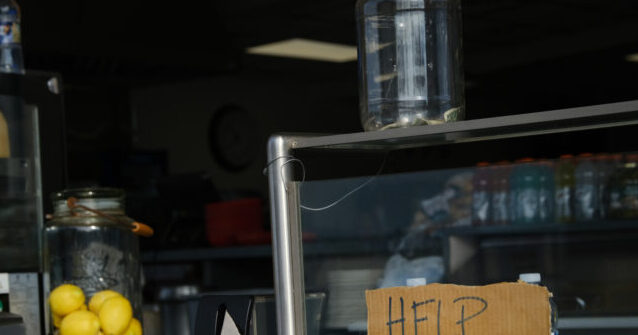Job openings fell to 7.18 million in July, missing economists’ expectations and underscoring the gradual cooling of America’s labor market as the Federal Reserve’s elevated interest rate policy continues to be a drag on the economy.
The Labor Department reported Wednesday that available positions dropped by 176,000 from June, falling short of the 7.375 million openings that economists had forecast. The decline brought job openings to their lowest level since early 2021, though they remain elevated by historical standards.
The report, known as the Job Openings and Labor Turnover Survey, or JOLTS, showed the job openings rate slipped from 4.4 percent to 4.3 percent in July. Before the pandemic, that rate typically hovered around 4 percent, suggesting the labor market is moving closer to pre-2020 norms.
But beneath the overall decline, two sectors stood out for adding substantial job openings: manufacturing, which posted 41,000 additional openings, and construction, which saw a surge of 64,000 new positions.
The manufacturing increase reflects what may be efforts by companies to bring production back to the United States or build more resilient supply chains. The sector’s job openings rose across both durable goods, like machinery and electronics, and nondurable goods, including food and chemicals.
Construction’s rise in openings was partially offset by a significant increase in layoffs.
The increases in these goods-producing industries contrasted sharply with declines in several service sectors. Health care and social assistance saw the steepest drop, losing 181,000 job openings — the largest decline of any sector. Arts, entertainment and recreation also pulled back significantly, cutting 62,000 positions.
The divergence between manufacturing and services may signal a broader shift in economic activity. While service sectors, which expanded rapidly during the pandemic recovery, appear to be moderating their hiring plans, companies involved in producing physical goods are maintaining stronger labor demand.
Overall hiring remained flat at 5.3 million in July, while the number of Americans voluntarily quitting their jobs held steady at 3.2 million. The quits rate, which economists view as a measure of worker confidence, remained at 2.0 percent.
The labor market appears to be in a different phase than it was two years ago, with workers holding onto their jobs rather than job-hopping, and employers being more selective about hiring.
The Federal Reserve has been closely monitoring job market data as it considers future interest rate moves. Fed officials have signaled that they are likely to lower their target rate at their next meeting later this month.
Wednesday’s report suggests that cooling may be underway, though layoffs and discharges remained unchanged at 1.8 million, indicating companies are reducing hiring rather than cutting existing staff.
Regional patterns showed most areas of the country experiencing declining job openings, with the South seeing the largest drop of 161,000 positions. The West was the only region to add openings, gaining 113,000.
The ratio of openings to unemployed people now stands at 1.1 to one, close to the historically normal balance but well below the post-pandemic peak.
Revisions showed June’s job openings were lower than initially reported, while hires and separations were revised higher.
Read the full article here
